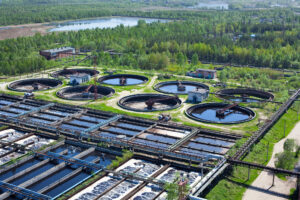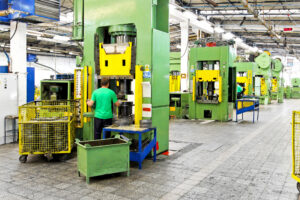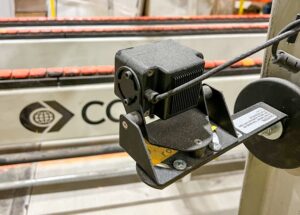“Working in a sawmill is one of the most dangerous occupations in the United States,” according to OSHA. Sawmills are harsh environments and log debarkers are extremely prone to accidents.
In sawmills, precision has to meet safety, and this is a tall ask. Mounting cameras on log debarkers can help with both.
Why Do You Need Cameras on Log Debarkers?
The biggest concern that a video monitoring system can address is safety. Rolling and sliding logs are very hazardous, and so is the environment itself. The wood dust and the chemicals used for debarking pose serious threats to your workers’ health. Any accident on a log debarker can have serious consequences.
Strategically placed cameras can spot accidents and incidents waiting to happen. A faulty piece of equipment that can wreak havoc on your working site can be spotted by a remote operator and the operations can be halted until you remedy the problem.
Video monitoring around log debarkers can help with more than safety. By having a bird’s-eye-view of all your processes, you can identify inefficiencies and improve and streamline your operations.
Opticom clients who use our cameras in their log debarkers report improved efficiency and better safety measures.
However, sawmill video monitoring isn’t without its challenges.
3 Challenges of Mounting Cameras on Log Debarkers
While sawmill video monitoring has an excellent ROI, not all operators get to reap its benefits. Why? Because monitoring your log debarker isn’t as easy as installing cameras in your home or a convenience store.
1. Log Debarkers Are Harsh Environments for Cameras
Cameras are sensitive pieces of technology, especially the electrical components behind the lens. On a log debarker, the high levels of vibration, the wood dust, and the debris can render a regular, off-the-shelf camera unusable in less than a week.
For instance, did you know that construction workers are advised not to keep their phones in their pockets while working with pick hammers? It’s because the vibrations affect the sensitive mechanisms in the lens of the camera so much that it completely breaks apart.
Log debarkers use heavier machinery, which means that the camera lenses are always at risk. Here’s a quick primer on how we build cameras that can withstand log debarker vibrations.
2. It’s Very Easy for Log Debarker Cameras to Get Hit
Things get hit by logs or pieces of equipment around log debarkers all the time and cameras are no exception. Our clients’ cameras get hit by a logs and continue to work. The industrial-grade mount protects the cameras, which continue to function at 100% functioning even after a direct hit. You won’t see this happening with off-the-shelf cameras.

3. Wood Dust and Debris Make Video Monitoring More Complicated
While vibration is the number one “killer” of log debarker cameras, dust and debris are close behind. It can be challenging to find a camera that’s sealed tightly enough to not let dust and debris into the interior mechanisms. Off-the-shelf cameras aren’t built to withstand such environments. Opticom cameras are.
Choose Cameras that Are Specifically Built for Sawmill Log Debarkers
You wouldn’t buy sawmill equipment from the same place you buy a hand-held mixer for your home, would you? This is precisely the reason you should buy specialized video monitoring solutions instead of off-the-shelf options.
At Opticom, we have spent more than five decades perfecting cameras, mounts, monitors, and other accessories for industrial use. We say “industrial” because we cater to more than one type of facility. But our five decades in this business also taught us that there are no two businesses with identical needs.
So our video monitoring solutions for log debarkers are far from identical to those for, say, food processing plants. We work closely with sawmill operations to understand their specific needs and provide them with solutions that answer those needs.
In fact, the first piece of advice we offer is to not choose your video monitoring system on your own—unless you know the industry very well.
Why?
Because you will, most likely, end up paying too much to get cameras with features you don’t need or buying cheap cameras that need to be replaced frequently. And you’ll still end up paying more than you should in the long run.
Talk to our consultants instead! It’s 100% free and with zero obligations. We’d love to help you get the video monitoring system your log debarker and sawmill need.







